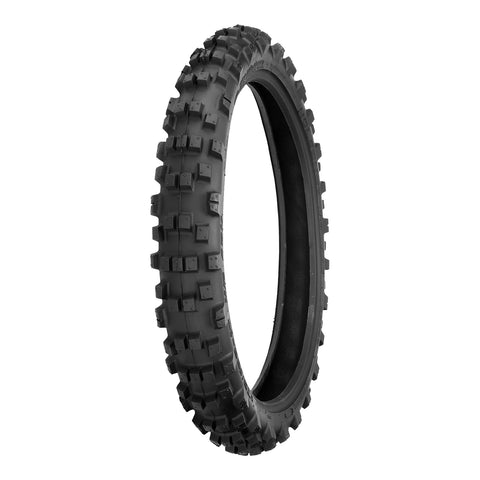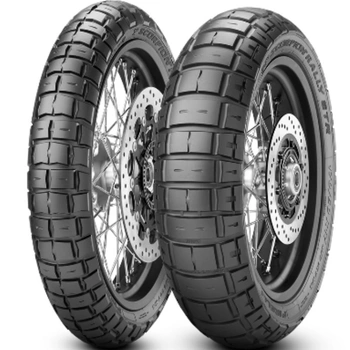Ensure enhanced safety on long rides with high-end Motorbike Tyres.
Ensure enhanced safety on long rides with high-end Motorbike Tyres.
Blog Article
All About Bike Tyres: A Comprehensive Overview for Lovers
For bike enthusiasts, comprehending the intricacies of their machine's tyres is a critical element usually ignored. This overview, 'All Regarding Motorcycle Tyres', unlocks the complex globe of tire types, sizes, and specs, all directly affecting performance and safety. It surpasses simple knowledge, giving workable tips for maintenance, option, and replacement. One can not assist yet question what refined changes this newfound knowledge may offer their following ride.
Recognizing the Fundamentals: Various Sorts Of Bike Tyres
Worldwide of motorcycling, tyres play a critical function, not just in making certain a secure experience but also in boosting the overall performance of the bike. They come in different kinds, each designed for specific riding problems and efficiency demands.

Then there are dual-sport tires, which provide an equilibrium in between on-road stability and off-road grasp. Competing tyres, utilized for track racing, offer optimal grasp however have a really short lifespan.
Recognizing these kinds and their specific functions assists motorcyclists choose the right tire for their riding design and problems, therefore ensuring ideal performance and safety and security. Such understanding creates the structure prior to diving into tire sizes and specifications.
Just How to Decipher Your Bike Tire Size and Specs
Having a strong grasp on the different kinds of motorcycle tires leads normally to a much deeper understanding of their sizes and requirements. This knowledge is critical for keeping maximum performance and security. The tyre's dimension and requirements are normally indicated on the sidewall. The very first number stands for the size of the tire in millimeters. The 2nd number, following a slash, is the aspect ratio or the elevation of the tire's sidewall expressed as a percentage of the size. The last number, if it's preceded by an 'R', indicates the rim diameter in inches.
Particular letters may follow these numbers, representing speed score and lots index. For instance,'M' stands for a maximum rate of 130km/h, while '70' indicates a lots lugging capability of 335kg. Such intricate details can substantially affect a motorbike's performance. Therefore, it's vital for bikers to recognize how to decode their motorbike tire size and specs.
Selecting the Right Tyre for Your Riding Style and Conditions
Picking the appropriate tire for your motorbike is not a choice to be taken lightly. It's important to think about the kind of riding one does frequently; whether it's commuting, exploring, off-roading, or sports riding, each style demands a different sort of tyre. Sport cyclists might choose for performance tyres that provide superb grasp and rate, while commuters could like tyres created for toughness and comfort.
Furthermore, the riding conditions play a substantial function. For wet and snowy problems, tires with deep step patterns and softer rubber substances are suitable as they offer far better hold and traction. Alternatively, for completely dry problems, more difficult rubber substances are suggested for their long life. Inevitably, recognizing your riding style and the conditions you'll face aids in choosing the ideal tire, improving both security and efficiency. Keep in mind, a tire mismatch can result in endangered handling and safety threats.
Tips for Maintaining Your Motorcycle Tyres for Ideal Performance
Appropriately keeping your motorbike tyres substantially increases their efficiency and long life. Routine examination is an essential component of this procedure. Motorcyclists ought to look for indications of wear and tear, such as cuts, punctures, or uneven wear patterns that may indicate positioning problems.
Cleansing is an additional vital element of tire maintenance. Getting rid of debris and crud not only improves the tire's look yet also prevents early wear. A gentle scrub with a soft brush and soapy water is usually enough.
The role of tyre turning can not be discounted. By alternating the tyres' settings, one can ensure also wear and prolong their life expectancy.
Ultimately, the motorcyclist needs to constantly keep an eye on the tyre's tread depth. A superficial walk can endanger hold, resulting in dangerous Learn More riding problems. To this end, numerous nations have legal minimum walk midsts, and motorcyclists are encouraged to stick to these regulations for safety.
The Effect of Tyre Stress on Your Riding Experience

Comprehending Tire Stress Dynamics
While it might appear an unimportant element to some, tyre stress plays an essential role in the general riding experience of a motorcycle. Motorbike Tyres. It impacts grip, handling, gas economic climate, and ride convenience. Over-inflated tires can make the experience rough and bumpy, while under-inflated tyres can lead to poor handling and raised gas consumption. Tyre stress additionally impacts the tires' contact spot - the location of the tire that touches the ground. A bigger call spot leads to better hold yet additionally faster tyre wear. Alternatively, a smaller get in touch with patch may expand tyre life yet concession on traction. Understanding these dynamics can aid cyclists make notified decisions concerning tyre stress, enhancing both performance and safety.
Changing Pressure for Performance

(Motorbike Tyres NZ)The excellent pressure differs with lots, road condition, and riding design. For optimum efficiency, it's critical to get in touch with the supplier's suggestions, generally engraved on the bike or in the owner's guidebook.
Regular checks making use of a reliable pressure scale are essential. As weather influences stress, modifications must be made when tyres are chilly. Thus, understanding and using right tyre stress adjustments substantially improve a motorcyclist's experience, promoting security and performance.
When and Just how to Replace Your Bike Tyres Safely
Guaranteeing the safety and efficiency of your trip, regular analysis and prompt substitute of bike tyres is a task of utmost relevance for each bicycle rider.
Tires must typically be changed every five to six years, or when the walk depth reaches 2mm. However, variables such as driving behaviors, road problems and tyre maintenance can affect this duration. It's vital to consistently inspect tyres, trying to find indicators of deterioration, leaks or deformities.
Changing a tire requires special devices and understanding. First of all, the bike must be safely raised. Adhering to deflation, the old tire can be gotten rid of by loosening the axle nut and gliding the wheel off. The new tire should be correctly lined up and pumped up to suggested stress.
It is typically advisable for less skilled motorcyclists to have actually tires replaced by professionals. This ensures safety and maximises efficiency, emphasizing the value of tyre upkeep in motorcycle usage.
Verdict
Finally, comprehending the intricacies of bike tires, from kinds to size specifications, plays a crucial duty in improving riding experiences. Making informed options based upon riding style and conditions, combined with correct upkeep and understanding of tire stress, can considerably improve performance and security. Recognizing when and exactly how to change tyres makes sure bikers can continue to enjoy their bike experiences with the utmost confidence.
Report this page